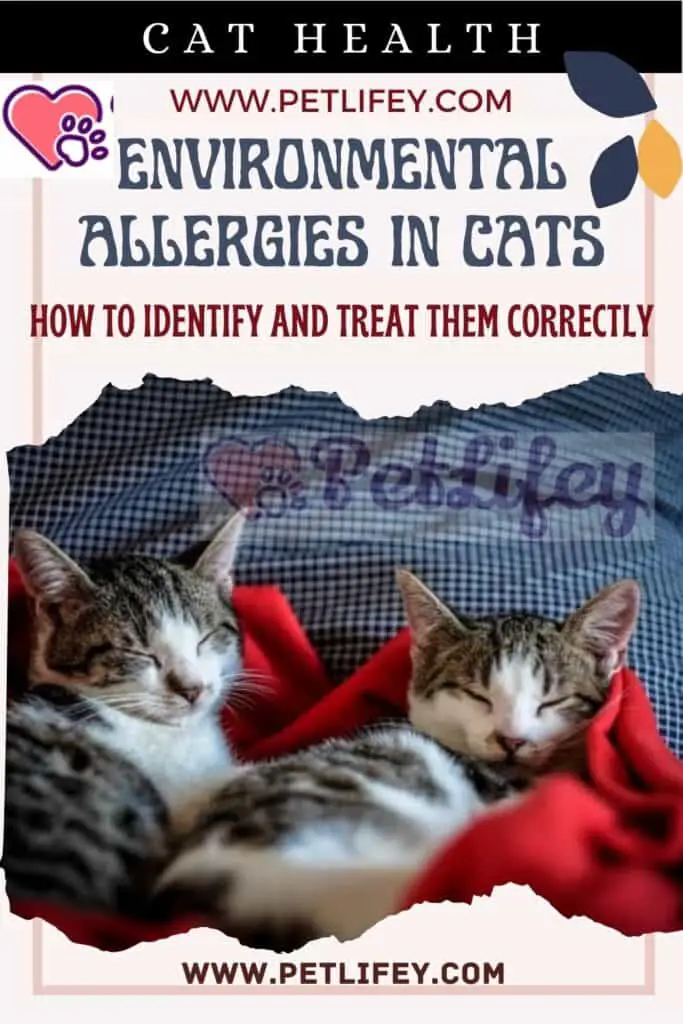
Not only do we humans suffer from environmental allergies: our cat too. Let’s find out what are the possible causes and how to best treat them.
Like us humans, our cat can also experience annoying environmental allergies. These reactions occur when the cat’s immune system is particularly sensitive to a substance, perhaps even very common. Feline allergies usually begin when the animal is very young, and worsen with growth. So let’s find out what are the possible causes of this condition, and how we can intervene to reduce the discomfort of the cat.
The most common environmental allergies of the cat
The environmental allergens that can affect cats are many, but the most common are the following:
- Hair of other animals;
- Grass;
- Dust mites;
- Pollen;
- Mold (in spores).
Some of these allergen irritants are seasonal, and therefore will be more aggressive at a certain time of year.
Many of us humans are aware of how annoying seasonal allergies are, and the really serious effects they have during their worst periods. And it also applies to cats.
But what do these allergies look like and how can we recognize them? When the cat’s body tries to repel the allergen, symptoms occur, usually annoying.
The most common symptoms of these allergies are those related to the skin. They are in fact the result of an atopic dermatitis (called atopy), which is an inflammation of the skin, in fact.
Atopy also presents with severe itching, caused by the presence of allergens. The affected areas are scratched, rubbed and bitten by the cat, which seeks relief.
Of course, all this leads to problems in these areas of the skin, with hair loss (due to excessive rubbing) or with wounds that can also become infected if left untreated.
The areas of the body usually affected by atopic dermatitis in cats are:
- Ears;
- Groin;
- Armpits;
- Ankles;
- Wrists;
- Area of the muzzle and nose;
- Area around the eyes (usually with excessive tearing and/or itching);
- Paw fingers.
How to treat these feline allergies

If our cat shows symptoms of atopic dermatitis, caused by environmental allergies, we must necessarily consult our veterinarian.
Examinations usually include an analysis of the cat’s medical history, and analysis of the symptoms currently shown. If environmental allergies are suspected, we will proceed.
The intradermal allergy test on a cat is similar to what is usually done in humans. Small samples of allergens are injected under the skin.
The veterinarian then looks for an allergic response to the various allergens, one or more of them. Once you have determined what the allergen (or allergens) is, we move on to therapy.
The therapy usually used is that of hyposensitization: small injections of the allergen are regularly administered to the cat to accustom its immune system.
Such therapy usually takes 6 to 12 months, and is considered effective only in 60 to 80% of cases.
Another method that your veterinarian may recommend is the use of antihistamines or corticosteroids, to reduce the discomfort of the cat and itching.
But since feline atopy is a chronic condition, there is no cure and we have to manage it throughout our cat’s life.
However, there are ways we can use to help our cat live this annoying condition to the fullest.
- We schedule regular appointments at the vet, on the advice of the doctor;
- If the allergen is pollen or grass, in the summer it is better to avoid exposure to fresh air. You can use the air conditioner as a fallback;
- If the cat is used to bathing, we can try to use a specific antipruritic shampoo for cats (usually it is used by bathing the cat with cold water);
- We avoid that the cat is in the room where we vacuum.
- If we notice on the body of the cat dust, grass or pollen, we clean his body.
- Some veterinarians recommend Omega 3, given in regular doses, as a supplement for the health of the coat and skin. Let’s inquire with our veterinarian.






